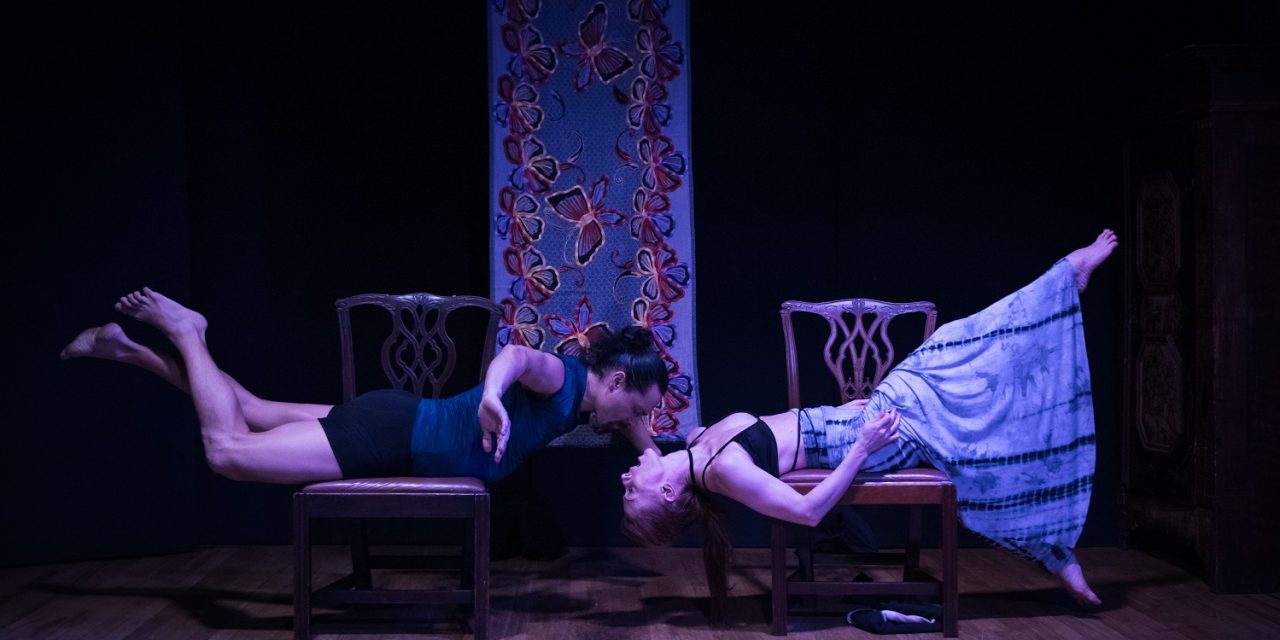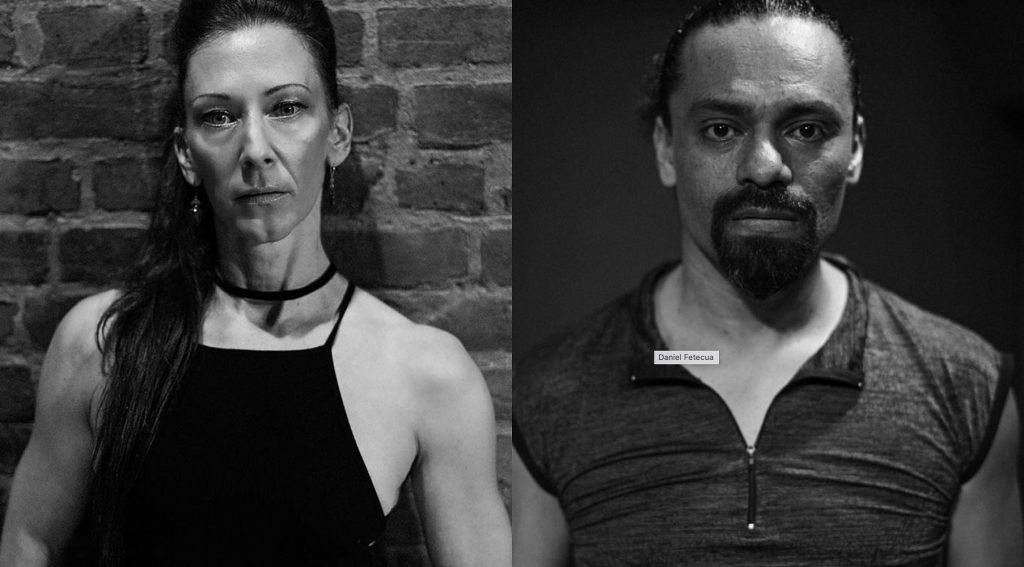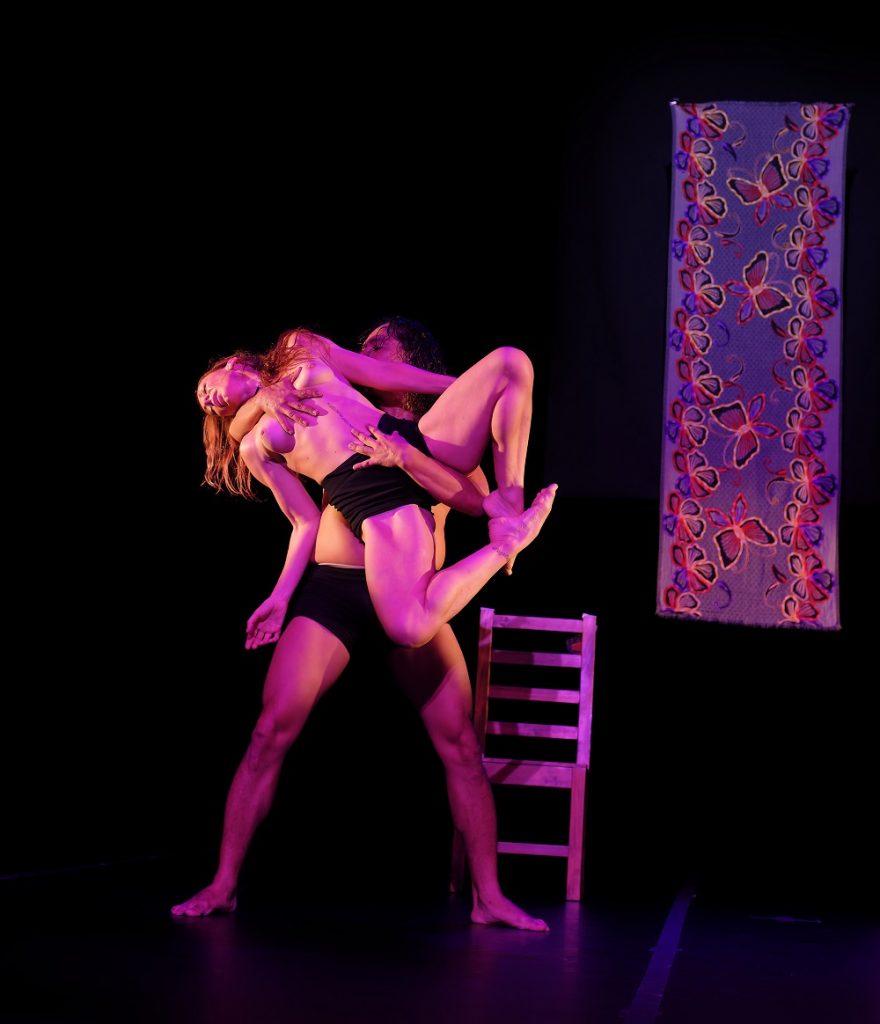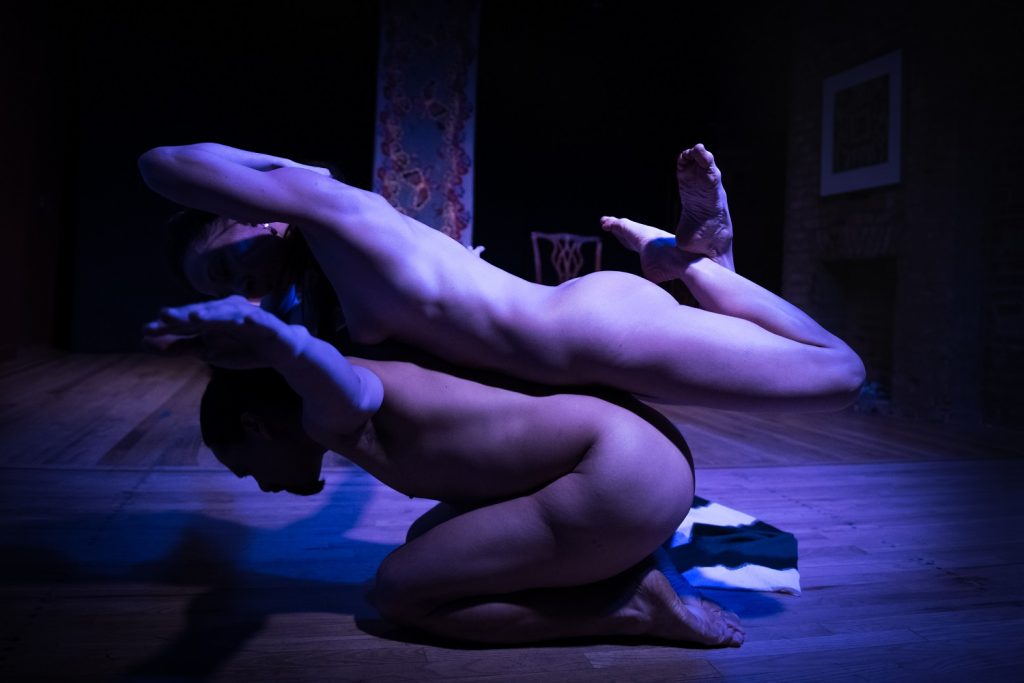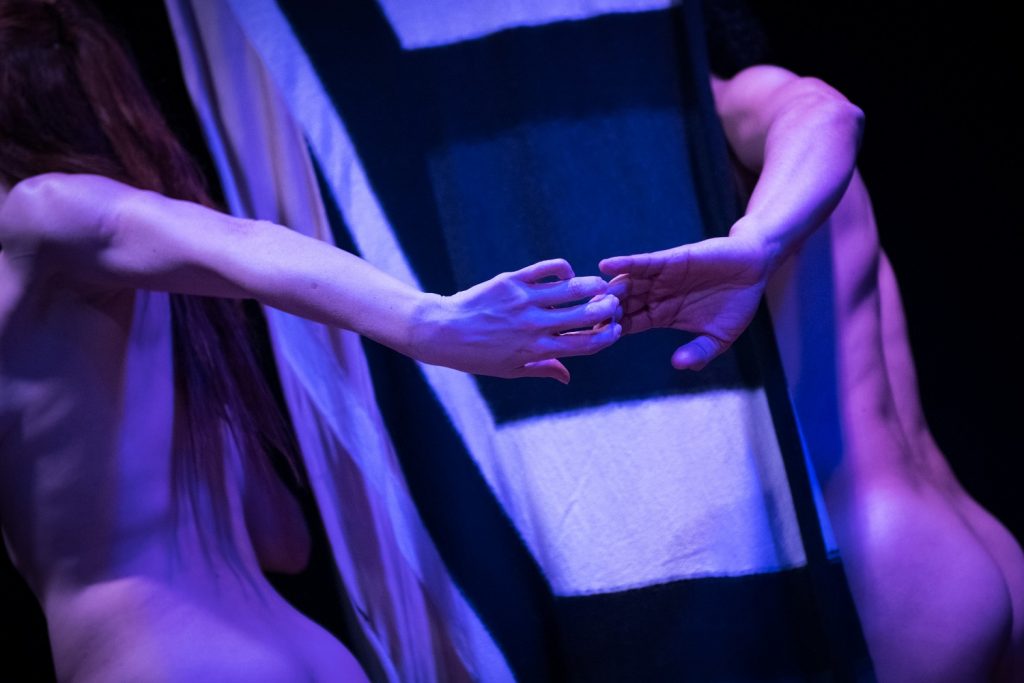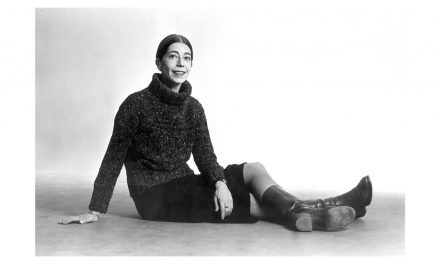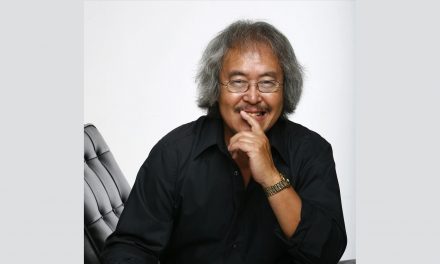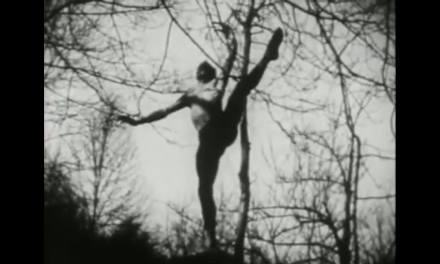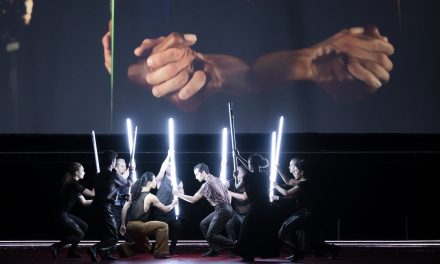She is a New York-based creative artist, dancer, choreographer, repetiteur, educator, and writer, born and raised in Louisiana, who received international critical acclaim as a Principal dancer with the Martha Graham Dance Company. Among the roles she performed were Lamentation and Errand into the Maze, earning her the prestigious Positano Premia La Danza Award for Contemporary Dance. The New York Times described her as a dancer of “powerful technique, dramatic instinct and an appealing modern spunk.”
He is a dancer, choreographer, educator, and producer born in Colombia and now based in New York. He danced as Soloist with the José Limón Dance Company from 2006 to 2016, performing many of Limón’s roles in Day on Earth, The Emperor Jones and Chaconne. He has appeared as guest in Pina Bausch’s Rite of Spring and Tannhauser. Fetecua-Soto is the Founder and Artistic Director of Pajarillo Pinta’o, which preserves and promotes Colombian traditional dances; and D-Moves, a contemporary dance project that combines Colombian traditions.
And who are these two? Blakeley White-McGuire and Daniel Fetecua-Soto are two incredible talented dance artists who will be presenting their latest work THE TONGUE OF THE FLAME at the Westbeth Studio Theater in New York City on Friday and Saturday, November 18 – 19, 2022 at 7:30 PM. THE TONGUE OF THE FLAME, conceived, co-choreographed, and performed by White-McGuire and Fetecua-Fetecua-Soto, will be performed for the first time to an original music score by Colombian composer Pablo Mayor. Tickets are on sale now.
To help spread the word about these amazing artists and to hopefully aid them in acquiring a tour of California that would include Los Angeles, I agreed to interview Blakeley White-McGuire and Daniel Fetecua-Soto in order to learn more about them and their new work, and as it turned out, they asked if the interview could be streamed live on their The Tongue of The Flame Instagram page. I said yes and thus launched into my inaugural Instagram Live interview.
The Tongue of the Flame has been performed in several iterations, the first taking place in New York City at the Bronx Arts Space. The second iteration was performed at the ID Studio Theater in Bronx, N.Y. Then Ballet Metropolitano in Medellín, Colombia commissioned a new work from White-McGuire and Fetecua-Soto which appeared on the same program as the second iteration of The Tongue of the Flame, along with Fetecua-Soto performing José Limón’s Chaconne and White-McGuire performing Martha Graham’s iconic work Lamentation. The performance in Medellín was produced and presented by Comfama and Pájara Cultural in the winter of 2022 and it was the first time The Tongue of the Flame was performed on a formal proscenium stage.
When speaking to dance artists about their new works, I always inquire about its genesis.
“From my perspective,” White-McGuire began, “Daniel and I had begun a relationship and had been exploring dance and were collaborators over the years. We began visiting different sites around New York City during the pandemic or perhaps a little before then. We went out to Water Mill and saw some of the work that Robert Wilson has there and we became very inspired by the nature, by the sensibilities and [we] let our imaginations start to take us into some spaces with our dance.”
Fetecua-Soto added that because he had danced with the Limón Company for ten years and White-McGuire with the Graham Company for 17 years, they were willing to take other roads, “bringing our experience to the space in trying to find the dance communication, the body communication in our practices,” he said. They were now learning from each other and traveling to different venues such as Block Island to explore movement together. It was on Block Island that they visited a labyrinth and had what White-McGuire described as an existential experience.
“This was during the pandemic,” Fetecua-Soto added. “It was beautiful to see the city totally empty. Somehow, humanity being empty and back to the beginning. We also brought that practice of what is the beginning of dance, how much we can take from what has been imposed from the entertainment industry, different believers, different religions and ideas. Taking those things up and really getting deep into the practice.”
During the pandemic they were fortunate to have use of a gallery studio at Bronx Arts Space and iD Studio Theater.
“We would teach all day on Zoom and then go to the gallery and work and rehearse all night,” White-McGuire said. “It was very creative and very stimulating.” Because they could not have a performance during the pandemic, the work that they did in the gallery came with zero pressure or deadlines to finish the work. Referring back to statements made by Fetecua-Solo about working during the pandemic, she added that they were asking themselves questions such as How do we begin now? How do we start over and where are we now?
“We had this experience in the labyrinth on Block Island,” White-McGuire continued. “We walked through the labyrinth; one person walked backwards and closed their eyes while the other guided them through the labyrinth. In that trust exercise, which was very spontaneous, I feel like that was the beginning of The Tongue of the Flame – that the trust and care was when we really started talking about caretaking and how to care for another body. What it is to respect and to hold a space for another person. I think that is really at the heart of The Tongue of the Flame.”
They have been very pleased by the reactions to The Tongue of the Flame, especially in Medellín, Colombia but also in New York. They have sometimes been unexpected but raw, genuine and heartfelt. From all the great feedback, it appeared that they had drawn the audiences into the story with them.
I asked how they had come up with the title. There is in Acts 2 of the Bible, a reference to Tongues of Fire when God is said to have caused the disciples to begin speaking in different tongues. White-McGuire is from southern Louisiana and knows the term Speaking in Tongues but said that the title of their work has nothing to do with either.
“It is an image that came to us when we were talking about, thinking about being in the pandemic, being in the space of rehearsing together at night,” she said. “Of being together a lot and creating and wanting to create. Of having this engine burning. It was like we were in the center of the center of the fire. We were the center of the flame. That is my recollection of where it [the title] came from.”
To Fetecua-Soto the title relates to the fire inside, to the beginning. It was then that Fetecua-Soto realized that he was wearing a t-shirt that had Fire Inside written on its front. “It is a little fire. The center of the fire. It is those inspirations,” he said after the laughter died down, “those little things inside that take you to do things in your life with a purpose.”
When asked if The Tongue of the Flame was a narrative work, Fetecua-Soto related how when they set out to create this work they did not want it to be a narrative dance, especially because they both had worked with choreographers who clearly created within that genre. He added, however, that for him, it had evolved into a series of short stories.
White-McGuire agrees that they did move away from the narrative. “But one of the many things that I love about this piece is that every performance it actually changed and that the narrative will be revealed the more we perform it.” she said. “At first it was really fluid and amorphis and we asked ourselves, What is this? What is this that we’re doing? And with each performance we’re beginning to understand it more.” White-McGuire shared that as an artist, the reason she makes a dance, writes an essay or a poem is because she wants to find out what they are. “There are things that I don’t know and I want to know. Why I make it is to learn.”
Back in 1992 when I asked Viola Farber if her choreography was influenced or inspired by the work of Merce Cunningham whom she had performed with for thirteen years, her answer was “No. I was inspired by what Merce did NOT do.” Because they had danced for many years with dance icons José Limón and Martha Graham, I asked Fetecua-Soto and White-McGuire that same question.
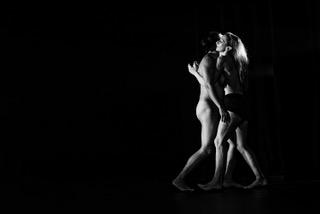
Daniel Fetecua-Soto and Blakeley White-McGuire in “Tongue of the Flame” – Photo courtesy of the artists.
Fetecua-Soto explained that he had participated in the Nadine Project for choreographers, led by one of his mentors, Janet Soares. “One of the assignments was to do something completely different from what you have ever done before,” he said. “It was fun getting into that space because it really makes you think how much of this movement comes either from the Limón training or from my Colombian experiences as a traditional dancer.” Although he tried it, Fetecua-Soto does not want to go away from his dance roots because José Limón’s work was so powerful in terms of its humanity. He continues, however, to combine who he is now with the work he has created in the past.
“For me,” White-McGuire added, “ I’m not interested in going away from anything I’ve learned. I’m interested in having a consciousness about it and understanding why I choose to use certain movements, certain esthetics, certain music or where it’s coming from. Consciousness about my choices is really important but personally, I want to keep all the information that I can, for as long as I can. As Daniel said, the cultures that we both have, the traditions that we both have individually and shared traditions – I think that they all come through and we let them come through.”
There is nudity in this new work that was not originally planned. Once they had begun to build the piece, however, they realized that it was necessary for them to begin in the nude. This harkens back to their idea of starting over from the beginning. When I suggested that the dance muses had told them that this had to occur, White-McGuire agreed and said that thankfully the muses continue to speak to them.
It was their plan from the start to have changeable parts within the work, for there to be different artists participating and collaborating within the work. Fetecua-Soto explained that in each iteration there has been a piece of art that is revealed at the end. When the dance was performed at the ID Studio Theater in the Bronx, they included a painting from an artist Ana Garcés Kiley that was in the theater and in Colombia they selected a painting by Colombian artist, Jaime Franco in Medellín. This process of collaboration with other artists includes composers and it was a grant from The O’Donnell-Green Music and Dance Foundation that provided the funds to commission work by Colombian composer Pablo Mayor. Mayor has also created music for theater and film.
Fetecua-Soto stated that they have always made it clear that this is a work in progress and that with Mayor’s score it will take them into yet another new experience. Fetecua-Soto has worked with Mayor before for many years, but this is the first time for both to dance to Mayor’s music. Mayor’s versatility ranges from his Folklore Urbano Orchestra creation “El Barrio Project – SALSA” to “Untold Tales,” a multi-disciplinary work inspired by immigrant stories from around the world, to music and dance collaborations with Daniel Fetecua-Soto. In addition to his own Folklore Urbano ensembles, Mayor is pianist with the Puerto Rican establishment Los Pieneros de la 21 and is a longtime performer with the legendary Cuban charanga Orquesta Broadway, a New York-based salsa band.
“We feel that we are putting Pablo into a totally new process with this piece and he is excited with the challenge,” Fetecua-Soto said. “But we decided to do it because of the response that he had when he first saw the piece. He understood deeply what we were doing although we didn’t explain anything to him.”
“Something that is really so exciting and simulating is the idea of having moments of true improvisation worked into the score,” White-McGuire added. “Our dream is to go to different cities or different places around the world and bring in local artists who can use an instrument that is native to that area. One who can improvise in that section of the score with a local instrument or a local way of singing – to be very inclusive and have the piece change dramatically based on our environment and the communities we visit. Our goal is performance yes, but even more than that, our goal is to share conversation and art in community.”
White-McGuire wanted to stress that there is choreography in this work but that it is ALIVE. “We are responsive within the structures that we have created,” she said. “There are moments of choreography, moments of improvisation, moments of leading and moments of following.” The structure she explained is fluid. “It isn’t only improvisation and it’s not the hog tie of someone else’s choreography. It is a world that we are responsible to and creating a new every performance and every rehearsal.”
Fetecua-Soto agreed and said that “it required that we be quite present, alive and very connected for every performance. You have to take the right path and we don’t know what that path will be until the end.”
White-McGuire is not only an extraordinary dancer and choreographer, but she is also a writer of essays, poetry, and her new book, “The Martha Graham Dance Company: House of the Pelvic Truth” (Bloomsbury Collections) is available for purchase HERE.
#####
On a side note, The Tongue of the Flame is being performed in a studio that was first owned by the Merce Cunningham Dance Company and school. Following Cunningham’s death, the Martha Graham Dance Company took over the space. For readers who do not see the irony of this, before founding his own company in 1952, Cunningham performed with the Martha Graham Dance Company for several years.
#####
WHAT: The Tongue of the Flame, choreographed and performed by Blakeley White-McGuire and Daniel Fetecua-Soto, with an original score by Pablo Mayor.
WHEN: Friday & Saturday, November 18 & 19, 7:30 PM
WHERE: Westbeth Studio Theater, 55 Bethune Street (11th Floor)
Tickets: $20 To make Reservations, please click HERE. https://www.brownpapertickets.com/event/5592572
Westbeth Studio Theater requires the wearing of masks at the performances.
To learn more about Blakeley White-McGuire, please visit her website.
To learn more about Daniel Fetecua-Soto, please click HERE.
Written by Jeff Slayton for LA Dance Chronicle.
Featured image: (L-R) Daniel Fetecua-Soto, Blakeley White-McGuire in The Tongue of the Flame – Photo by Paula Lobo

